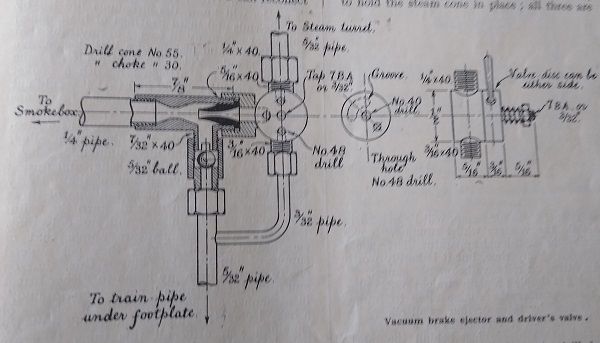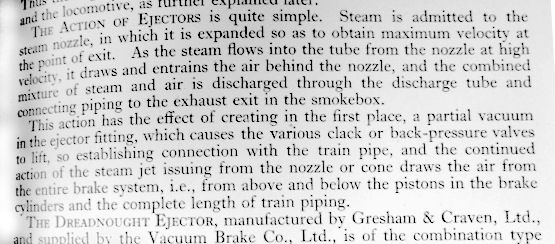Posted by Andrew Tinsley on 25/06/2020 10:39:08:
I believe that "steam having more energy than compressed air" is somewhat misleading. Ejectors work on Bernoulli's principle. Nothing to do with steam condensing and liberating energy.
My ejectors work on air and steam. In fact a little better on air, which I find surprising. Although this is probably due to gauge calibration.
Andrew.
'Ejectors work on Bernoulli's principle. Nothing to do with steam condensing and liberating energy.' Interesting point. I'm not even sure Bernoulli's Principle applies to ejectors – is an an ejector one flow field or two?
My books don't help much. This from 'Steam Locomotion', Poulton, Caxton, London 1951 being typical:

But it does say, 'This action has the effect of creating in the first place, a partial vacuum in the ejector fitting…'
As to what it means by 'draws and entrains the air behind the nozzle', I see that as a sort of friction effect much as a moving nylon fishing line pulls water after it. The friction is due to the high-speed jet creating turbulence as it jumps the gap. In my view steam would do more work faster than air because it contains more energy, hence higher velocity at the nozzle for a given input pressure.
I suspect the sizes and angles of an ejector's nozzle, expansion chamber and outlet cone are all interrelated and depend on the pressure of the gas, which comes from the energy in the system. My suspicion – no more – is that air ejectors might work best at a particular pressure, while a steam ejector might struggle to perform with compressed air, they're not interchangeable with no loss of performance.
One of my other books mentions air ejectors are valued for efficiency (best use of energy), whilst steam ejectors are chosen for volume (max quantity pumped in a given time).
Very educational this forum. I knew full size vacuum brakes work by pulling the brake blocks off and fail safe if there's any kind of fault. I didn't know model size vacuum brakes worked the other way round, positively pushing brake blocks on to the wheel. Very sensible – a model brake doesn't need to be fail safe. Full size vacuum brake systems have reservoirs so the train doesn't have to repump from scratch each time it stops. (I wonder how long it takes a steam loco to release all the brakes on a long train after the vacuum has completely failed?) A positive action brake system likely doesn't need reservoirs because the vacuum should go straight to the wheels.
Dave
Edited By SillyOldDuffer on 25/06/2020 15:20:07
David Bothwell 1.






